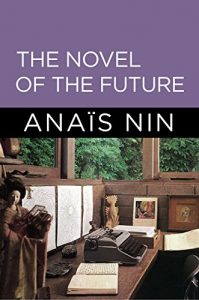Long before she became famous for her Diary, Anaïs Nin fought a lonely battle to give America emotional, poetic fiction. During the 1940s and 1950s, her most productive period, she was either ignored by the American literary establishment or subjected to outright hostility. But she had a reputation for not caving in—when her high school teacher told her to buy common magazines to learn common English, she left school and taught herself how to read and write; when no one would publish her, she bought a printing press and made her own books; when she was told by publishers, critics, friends and lovers to incorporate more realism in her work, she not only stuck to her own methods, she wrote pamphlets and gave lectures explaining the meaning and value of her fiction, the culmination of which is here in The Novel of the Future.
This is a battle cry, a call to arms, a rebellion against conventional fiction in which realism outweighs imagination and violence takes the place of emotion. It is as relevant today, if not more so, as it was in 1968, when it was first published. It is a blueprint for young writers who, Nin hopes, will help create a more sensitive America.
This is a battle cry, a call to arms, a rebellion against conventional fiction in which realism outweighs imagination and violence takes the place of emotion. It is as relevant today, if not more so, as it was in 1968, when it was first published. It is a blueprint for young writers who, Nin hopes, will help create a more sensitive America.






